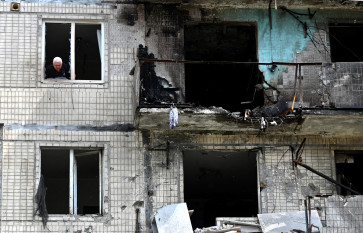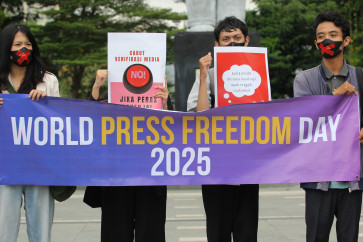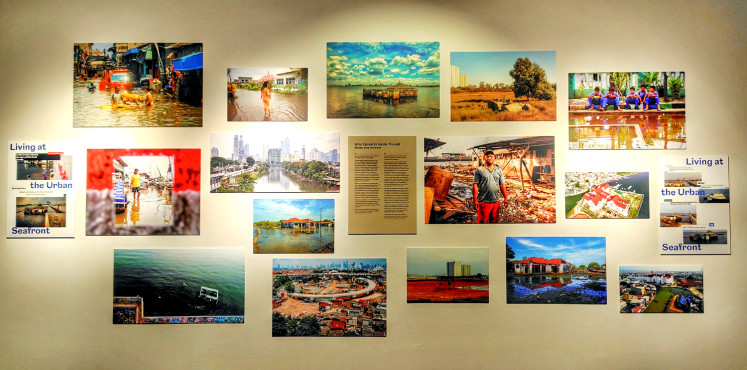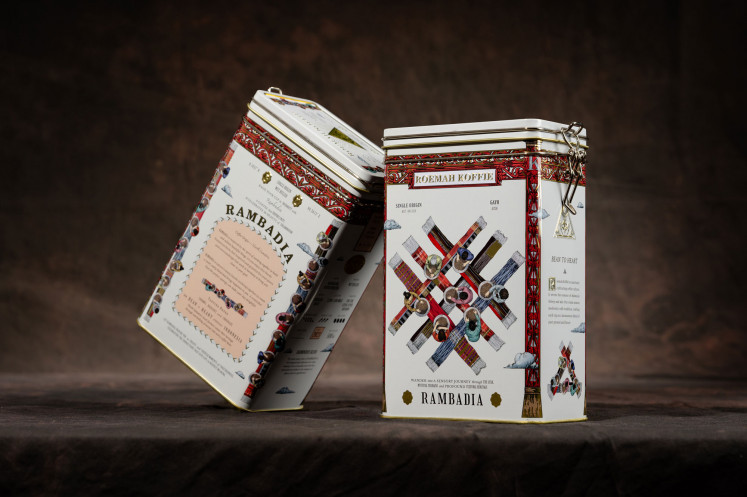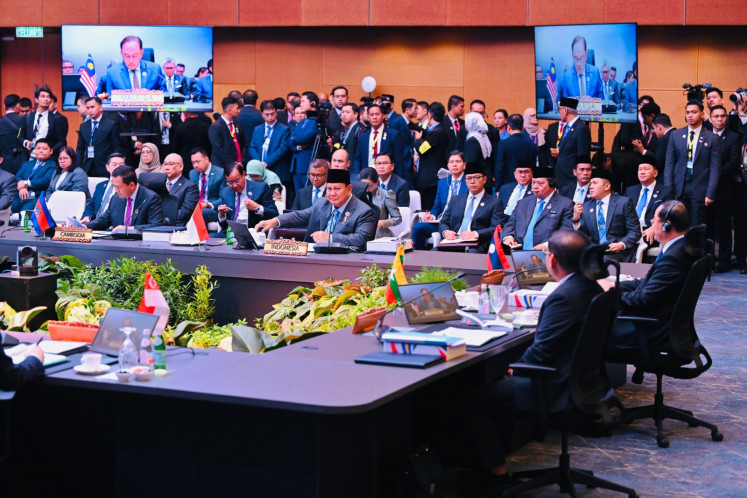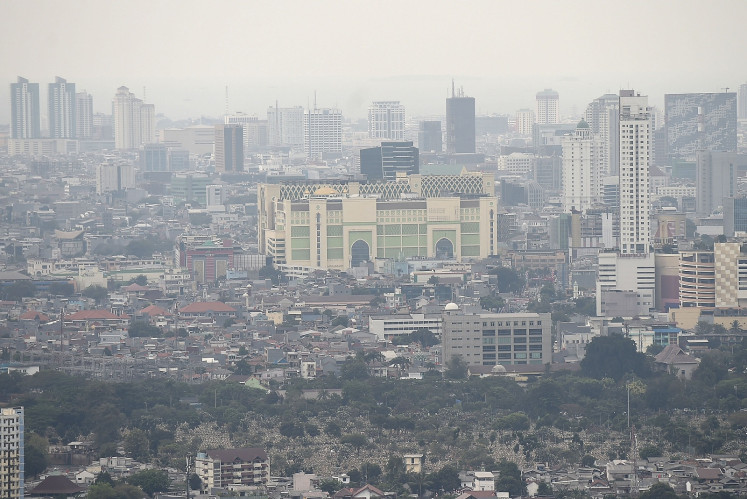Real or fake? Indonesia's art world reality
The problem in Indonesia is that many reproductions are passed off as real works, as many bear an authentic-looking signature of the original painter.
Change text size
Gift Premium Articles
to Anyone
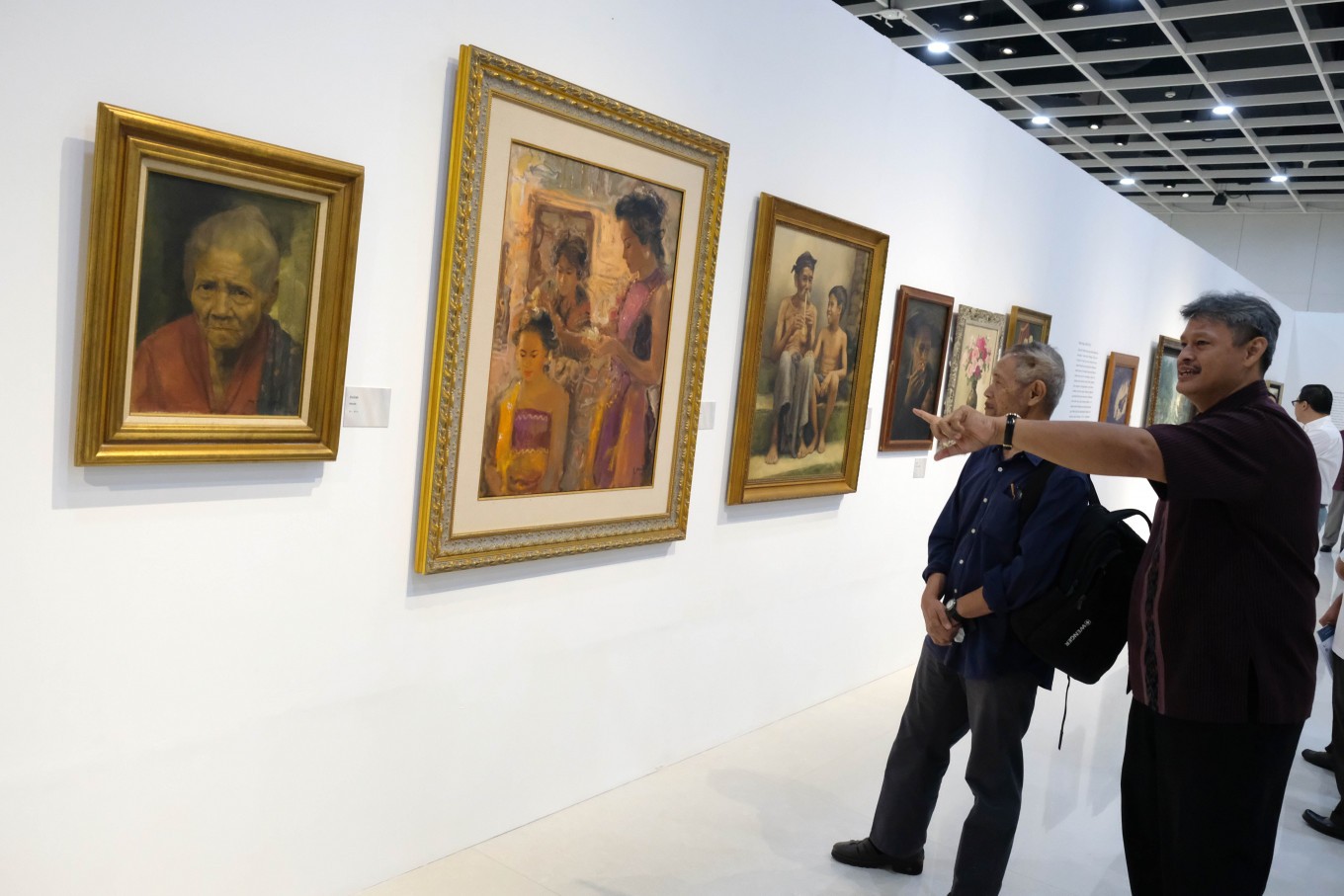 Respecting authenticity: Syakieb Sungkar (right), the editor of a book titled Melacak Lukisan Palsu (Tracing Fake Paintings), and prolific writer Goenawan Mohamad admire paintings at the Maestro dan Para Pengikutnya (Maestros and their Disciples) exhibition at Ciputra Artprenuer in Jakarta on Thursday. (JP/Jerry Adiguna)
Respecting authenticity: Syakieb Sungkar (right), the editor of a book titled Melacak Lukisan Palsu (Tracing Fake Paintings), and prolific writer Goenawan Mohamad admire paintings at the Maestro dan Para Pengikutnya (Maestros and their Disciples) exhibition at Ciputra Artprenuer in Jakarta on Thursday. (JP/Jerry Adiguna)
The robust but hidden industry of art forgery is a reality in the global art scene.
From the existence of “legitimate reproductions” to the overwhelming demand for reproduced prints of works by late artists, it is an industry that serves well on its own — hidden in plain sight, only criminal in theory but not in practice.
Indonesia’s own art scene is not excluded from this phenomenon. For the past several years, there have been random and sporadic cases of supposed forgeries of works by late Indonesian masters, which have drawn criticism aimed at collectors, curators and brokers of fake art.
The problem in Indonesia is that many reproductions are passed off as real works, as many bear an authentic-looking signature of the original painter.
This is an issue that hits the heart of the Indonesian Fine Art Lovers Association (PPSI), as they feel the market will ultimately be flooded with unauthorized fakes, which would diminish the quality of Indonesian art.
The general consensus is that fakes are acceptable only if they are presented as such, without the forged signature of the original artist, or with the blessing of the artist’s family.
But it seems in Indonesia, many reproductions are being passed off as the real thing, and for collectors who acquire the supposedly genuine works, it would be a blow to their pride to admit their misjudgment.
“Completely eradicating forged artworks in Indonesia is very difficult to do,” said PPSI chairman Budi Setiadharma. “But as the PPSI, we operate on the feeling that it is the right thing to do, morally.”
To address the issue, the organization launched a new book titled Melacak Lukisan Palsu (Tracing Fake Paintings), a collection of extensive research-based pieces into the phenomenon by art critics, media, curators, collectors and family members of the artists whose works have been forged.
The book’s editor, art critic and collector Syakieb Sungkar, said it was the first book ever published on the topic of art forgery in Indonesia and had been in development for the past four years.
“Over the years we worked on this book, we had to update it frequently because many forgery cases popped up. But the fact there have been so many updates shows how rampant this issue is in Indonesia’s art world,” he said.
The book takes an in-depth look at the skills of renowned Indonesian artists such as S. Sudjojono, Hendra Gunawan and Lee Man Fong and the history of their paintings being among the most widely forged in Indonesia.
A chunk of the book also talks about a controversy that arose in 2012 regarding the Oei Hong Djien Museum in Magelang, Yogyakarta, in which curator and collector Oei Hong Djien was severely criticized by the families of Sudjojono and Hendra Gunawan for passing off fakes of the artists’ paintings as real. A full in-depth article printed by Tempo magazine back in 2012 is also included in the book to provide context to this controversy.
In tandem with the book’s release, and as a subtle dig at the phenomenon itself, the PPSI is both celebrating and condemning art forgeries by holding an exhibition displaying reproduced paintings at the Ciputra Artpreneur Gallery in Lotte Avenue, Central Jakarta from Nov. 22 to 25.
The works displayed at the “Maestros and their Disciples” exhibition here are seen not as forgeries but as “tributes”, as other artists purposefully reproduce works from legendary Indonesian artists such as Affandi, Dullah, Arie Smit and Indonesia-affiliated German painter Walter Spies.
The artists involved in this exhibition are either direct students or the followers of the artists being paid tribute, such as Men Sagan to Affandi, Gung Man to Arie Smit and Inata and Kok Poo to Dullah.
“The differences here are that these reproductions are not signed in the name of the original artists, as forged ones are,” said Ciputra Artpreneur president director Rina Ciputra. “The artists here either paint the originals as they are, or they use the techniques of the artists they are paying tribute to in their own original paintings.”
An example of the latter is shown in the Affandi reproductions, which are painted by Men Sagan and Affandi’s own daughter, Kartika.
Men carefully and faithfully recreated several of Affandi’s paintings to a T, such as Nelayan (Fishermen) and Pohon Beringin (Banyan Tree), which could pass as the original Affandi to an unskilled eye. Men, however, does not sign Affandi’s signature on his reproductions.
Kartika displayed her own original paintings, but doing so in the same style as her father. From the looks of her 1994 work Tukang Cukur (Barber) and 1992’s Pasar Malam (Night Market), her father’s signature traits of heavily layered carefree colors as well as intricately thin but steady lines have passed down very well.
While the immaculate skills of professional forgers and reproducers are generally recognized by the art world, art critic Agus Dermawan T. believes the talents of those who are able to forge and reproduce could mean so much more if only they did not pass off their fakes as originals.
But since there is an active supply and demand for such artworks, forgeries will always be part of the market, and professional forgers will always receive works from curators and collectors to make forged paintings.
“As long as people feel they will never own a Van Gogh or a Rembrandt, a copy of it will always suffice. It’s the truth too for prints and works that are either extremely rare or extremely expensive. It is worth more too if it gives out the idea it was by the original artist themselves,” Agus said. “It’s a reality we have to accept”.


